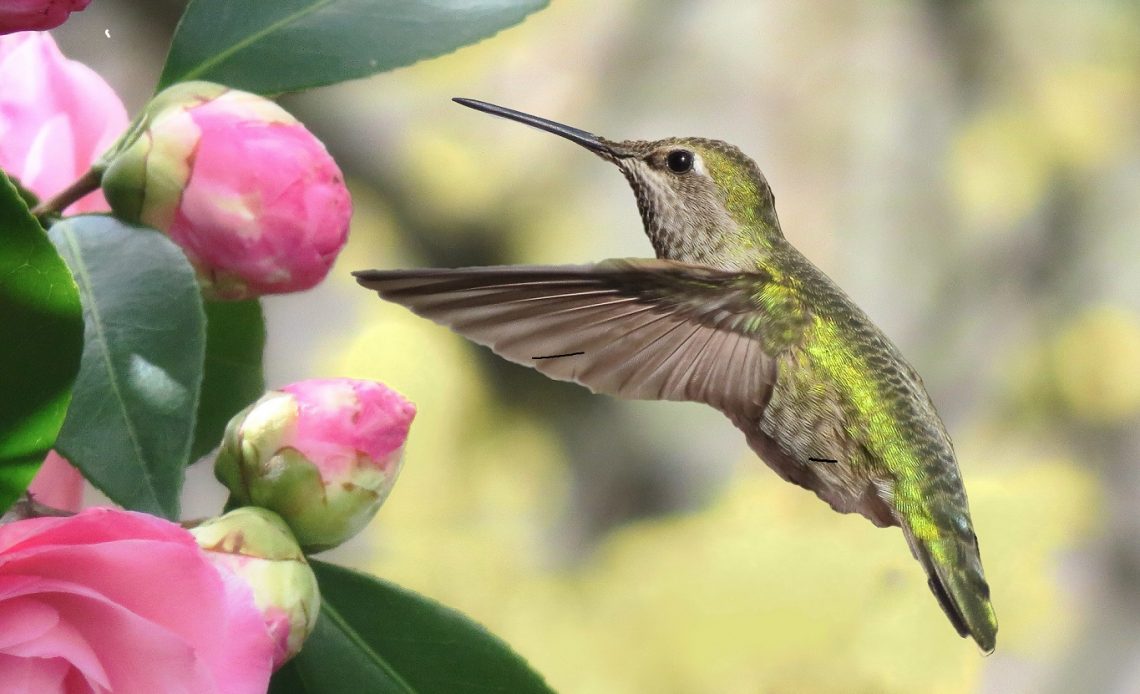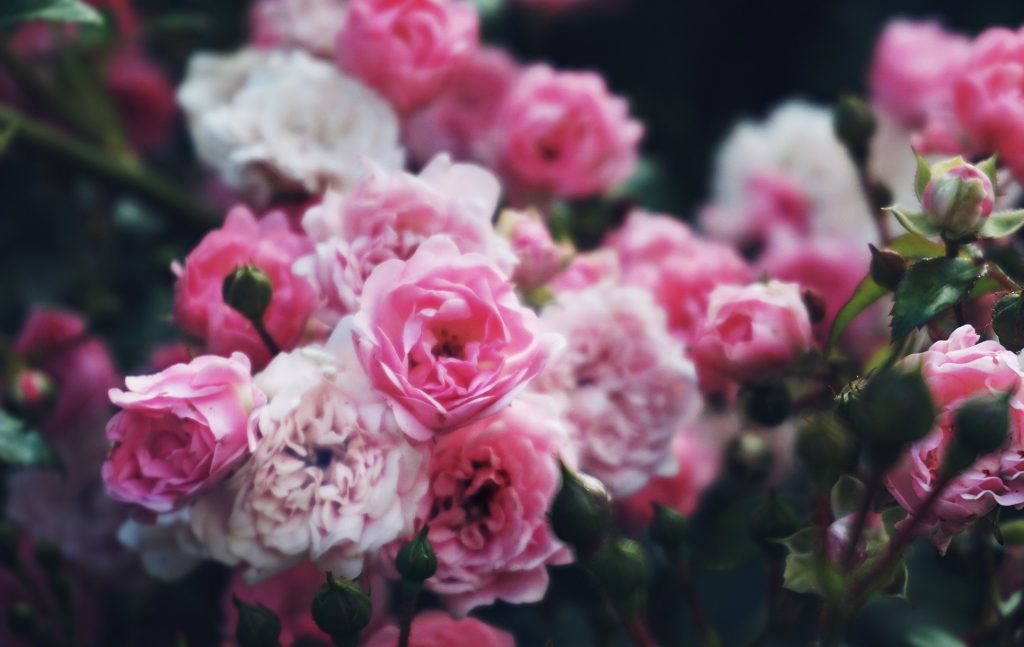

We’re here to help! Wild Yards is a completely free website that is 100% dedicated to helping you create a wildlife-friendly, sustainable yard. Read more
WildYards is reader-supported. When you buy a product through a link on our site, we may earn a comission. Every product is independently selected by our (obsessive) editors and our reviews are unbiased and objective. Read more about our mission or our privacy policy.
Hummingbirds make for a delightful sight in any yard, and many gardeners are eager to identify flowers that attract them. The sight of these brightly-colored birds zipping from blossom to blossom is enchanting to everyone who sees them. And if you want to bring hummingbirds to your yard, you’re probably wondering: do hummingbirds like roses?
With their bright colors and rich scent, roses may attract hummingbirds to your garden, but they have little nectar in them for hungry birds to eat. If you want to keep hummingbirds coming, you must plant nectar-rich flowers alongside your roses so they have a reason to stay.
What kind of flowers do hummingbirds like?
Hummingbirds feed almost entirely on nectar, the sugary liquid produced by flowers. They use their thin, probing bills and long, extensible tongues to drink from blossoms. Because of the shape of their beaks, they prefer tube-shaped flowers, and of course, like species that produce a lot of nectar. They are also attracted to bright colors, particularly deep reds, but also seem to enjoy purples, oranges, pinks, and yellows.
But not all brightly-colored flowers are attractive to hummingbirds. For instance, did you know that hummingbirds do not like marigolds?
Why don’t hummingbirds like roses?
With their brilliant colors and rich scent, it might seem like roses are the perfect choice to bring hummingbirds to your garden. However, while roses certainly are the right color to be attractive to hummingbirds, similar to pansies, most varieties produce little to no nectar. And even if they did, the rounded, thickly-petaled rose blossoms are the wrong shape for hummingbirds to easily feed on. So, while your rose bushes might bring hummingbirds in to have a quick look at your garden, they will quickly realize there’s little to keep them there.
Hummingbirds have extremely fast metabolisms and need to eat an enormous amount for their size. They need reliable sources of large amounts of food. That means they can’t afford to waste time with flowers that don’t give them what they need, no matter how beautiful those flowers might look!

Is it still worth growing roses for hummingbirds?
Of course! Hummingbirds love bright colors, especially deep reds, and it’s hard to imagine a deeper and more brightly colored flower than a beautiful rose. And while roses might not supply the nectar that hummingbirds need, they provide plenty of pollen for bees, always a welcome visitor to any garden.
The trick is that while the roses might bring the hummingbirds around to have a look, you then need to have something to keep their interest. Roses don’t provide the nectar hummingbirds want, so what can you plant alongside them to satisfy a hummingbird’s appetite? You’ll want flowers that grow in similar conditions to roses, but won’t crowd them out, compete with them for resources, or spread diseases and pests to their more delicate neighbors.
Lavender is a great choice to keep hummingbirds coming back; those beautiful purple blossoms are chock-full of the nectar hummingbirds love. And lavender grows well alongside many varieties of rose. Lavender is also hugely popular with bees and butterflies.
Zinnias are another flower hummingbirds love, and they will flourish happily alongside most roses. Mix it up a bit with some gladioli too; those funnel-shaped, nectar-rich flowers are just right for hummingbirds.
Jasmine flowers are rich with nectar, but might not be bright enough in color to attract hummingbirds on their own. But jasmine vines will grow quite companionably with climbing roses. So growing a bright orange or red climbing rose to bring the hummingbirds in alongside jasmine to provide the food source might be just the ticket! And there are many other vines that will get hummingbirds humming besides jasmine; see which ones might suit your garden best.
The roses might not provide a food source, but they can at least bring the hummingbirds in, and they can provide a safe perch for the birds to have a rest. And while hummingbirds may not feed on the flowers themselves, they will eat small insects like aphids that are common rose pests.
What else can I do for hummingbirds if all I have are roses?
Maybe you have a small garden that only has room in its flower beds for your few prized rose bushes, but you still want to attract hummingbirds. Don’t worry, it’s still possible! If there’s no room in your beds for hummingbird-friendly flowers, there are lots of potted plants and even hanging plants that will bring these beautiful birds to your garden. And, of course, you can always put a hummingbird feeder out for them. An artificial feeder is also a great way to help hummingbirds out in the winter; yes, some of them do stick around during the colder months (depending on your location, of course), and they still need to eat!
Don’t forget that hummingbirds need water too! A birdbath will be a welcome sight to any feathered visitor in your yard, whether a hummingbird or one of the larger species. Having a place for birds to drink and bathe will do a lot to make your garden more attractive.
Roses and hummingbirds may seem like a match made in heaven, but unfortunately, the truth is more complicated. Roses just don’t provide the nectar that hummingbirds desperately need. But there’s no reason roses can’t be part of your hummingbird-friendly garden. Choose bright colored varieties, have plenty of other, nectar-rich species that hummingbirds love, add in a birdbath and a feeder, and you’ll have a yard that’s a welcome sanctuary for any humming visitors.
